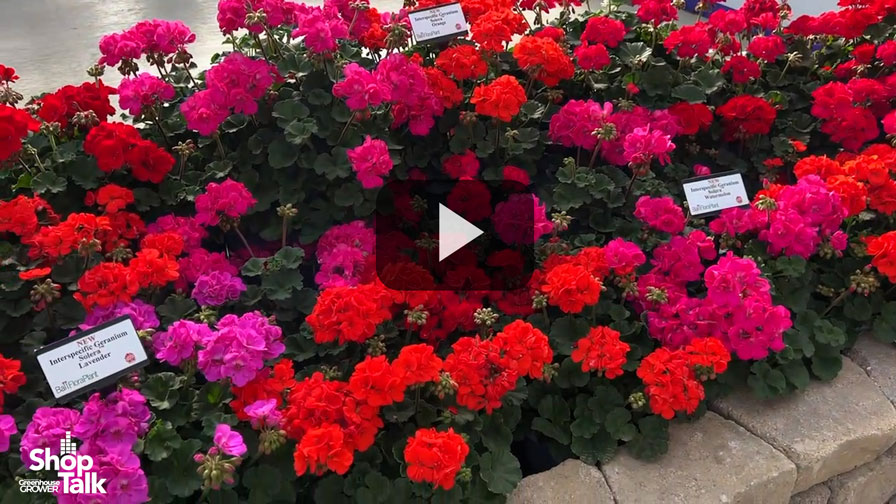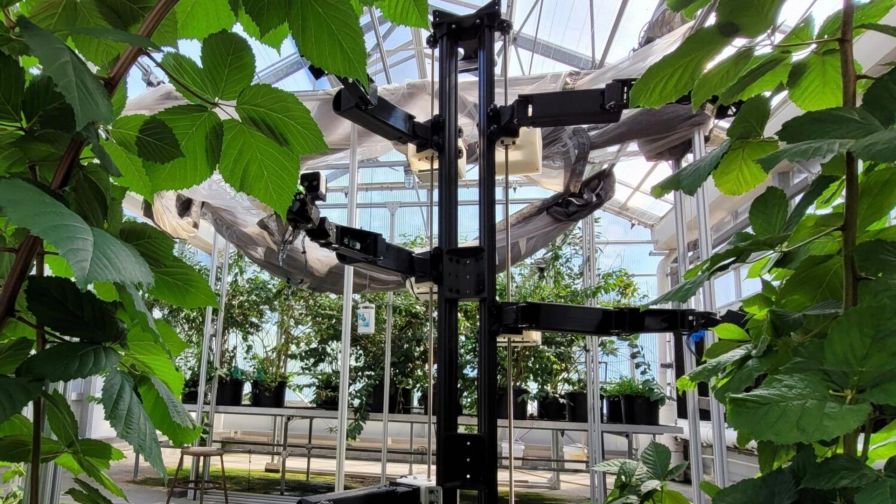2015 State Of The Industry: Current Green Industry Trends

Charlie Hall
There are so many factors contributing to the overall health of an industry that it’s shortsighted to focus solely on one specific element. For the green industry, marketplace trends encompass consumer spending and confidence in general, as well as how and where plants are purchased. At present, local garden centers are holding their own in most markets and even increasing sales for the better stores, if adequate attention to merchandising, customer service and consumer trends is given. However, many firms that are still using the “grow it and they will come” approach are struggling, and many local garden centers are looking to complement their business with other non-plant lines.
Structural Changes Continue In The Supply Chain
Supply chain trends have a significant influence on the vitality of the industry, and vice versa. We continue to see a number of structural changes occurring in the green industry. The shakeout that started with the Great Recession has slowed, but nonetheless continues at all levels of the supply chain. Several more reputable growers, landscape service providers and retailers have gone out of business since last year. Not all of this productive capacity has exited the industry, however. Consolidation activity through mergers and acquisitions continues to shrink the number of industry participants, but some of the capacity is simply being operated under a different name.
Expenditures For Plants Projected To Grow
Garden center trends are dependent upon a number of influences, including seasonality, weather, competition from mass merchandisers and home centers, consumer spending patterns and region. The demand in the U.S. for lawn and garden plants and supplies is regional and highly dependent on climate and growing conditions, as evidenced when “Snowmageddon” in the northern half of the U.S. last year delayed the spring gardening and landscaping season. But conversations with several retailers indicated that many had the best monthly sales last May than they had ever had and that the season even extended a couple of weeks longer into the summer than usual.
The other good news is that retail sales for building material and garden equipment and supplies dealers, a corollary measure of garden supply demand, increased 3.7 percent after the delayed spring season, as well. Personal consumption expenditures of flowers, seeds and potted plants, a major driver for garden centers, are forecasted to grow at an annual compounded rate of 5 percent between now and 2017, according to data published by First Research, a provider of industry intelligence.
Hard Goods Demand Is Up As The Housing Industry Rebounds
Demand for decorative outdoor hard goods, such as lighting, pavers and fountains, will also achieve double-digit growth now through 2015, according to the Freedonia Group. As the housing industry continues its rebound and the economy improves, consumers will unleash pent-up demand for landscaping renovations and updates that may have been put off during the recession and for many years afterward.
Landscape Firms Scale Up To Remain Competitive
Landscape service trends appear to be improving. In fact, according to First Research, the output of the U.S. landscaping industry is forecast to grow at a compounded annual rate of 4 percent through 2016, indicating steady growth in the longer term.
I made an informal tally of the mergers and acquisitions over the last three years and they filled up three pages single-spaced! About 80 percent of those were in the landscape sector, reflective of the fact that regional landscape firms are rapidly scaling up to achieve the economies of scale necessary to compete with the behemoth created by the Brickman’s and Valley Crest merger.
Housing Will Reinvigorate The Green Industry
Housing sector trends are very important because the green industry is strongly correlated to housing starts and the housing recovery continues to be modest. New home construction has been slow to maintain the momentum seen earlier in the recovery, with housing starts falling to a 956,000-unit annualized pace, which is still less than half of the pace of units started before the recession hit. Due to the recent volatility, starts look fairly flat so far this year. Despite the slow growth, homebuilder sentiment continues to improve and has reached a new high for the current recovery.
Homebuyer traffic, current sales and expected sales all improved in the latest homebuilder survey, which bodes well for the new home sales numbers in the next couple of months. However, a large upswing in housing construction will likely be put off until next year, as building permits have also remained fairly flat. But the underlying economic fundamentals remain strong and point to a pickup in the housing recovery, including more residential construction.
Despite recent price increases, home prices remain low and housing extremely affordable. Long-term interest rates are expected to remain low, particularly for mortgages. The most recent Beige Book survey by the Federal Reserve suggests that lending conditions are easing. Even builders are finding it relatively easy to get financing these days. This is one of the most dramatic shifts in credit markets since the onset of the crisis in 2008.
Mortgages and home equity loans are also becoming easier to secure. Ballooning student loan debt, combined with the hurdles that first-time buyers must overcome to qualify, remains the fly in the ointment.
Inventories are tight, especially in the single-family housing market. Household formation is picking up, and still running well above the pace of new construction. Household formation has moved up from about half a million per year during the worst of the crisis and immediate aftermath to more than one million a year today. The consensus among housing pundits is that we will easily cross 1.5 million starts a year once the unemployment rate drops significantly among young adults. Many parents would love to see their children leave the nest instead of doubling up in the family home. For the 25-and-under crowd, we should see household formation settle into a trend of 1.5 million new households over the next several years; that will be because young adults will find new jobs and finally leave their parents’ nests, again. All of these housing trends, in addition to the trends discussed earlier, point to a reinvigoration of the green industry marketplace over the next several years.
Outlook Is Positive For 2015
The current health of the economy is extremely mixed, with most of the leading indicators trending positive, but others improving very slowly. Mixed performance in the economy, coupled with extreme weather conditions across much of the country, makes for a terribly challenging and uncertain environment, as we saw this past spring. I remain optimistic about the recovery, however, given the industry’s performance this spring.
I still have reason to believe that the most successful firms in 2015 will be those that are well-positioned with their customers in the marketplace, not overleveraged and clearly articulating their value proposition. We will likely see continued structural changes across the industry supply chain as we morph into the more compact and efficient industry of the next decade. This will not only mean further consolidation in the industry but deeper, more strategic relationships among those left from the transition. The green industry in the next decade will not look the same as the last decade.
It is more critical than ever to convey value and relevancy in an authentic manner to end consumers, but the factors that will guarantee success in the future are going to change. Better brand management, more detailed SKU movement and replenishment analysis, greater efficiency in distribution and logistics, closer integration of genetic innovations and supply levels with consumer demand and the assimilation of innovative marketing technologies (social media and otherwise) are the new key success factors of the future.
Notice that growing a quality plant isn’t listed; that’s because it’s a given. Growers will continue to have to have quality to even play in the game. Growers that master these key success factors will not only be postured better for the potential shocks in the economy in the short-run, if they do occur, but they will lay the groundwork for solid performance during any future economic downturns.
Without a doubt, the data above confirms that the downturn in housing and its less-than-stellar recovery has had a profound impact on green industry product sales in recent years. Bedding plant growers have had an easier market in which to compete, as households have tended to downsize their plant purchases in an attempt to maximize their purchasing power; for example, smaller but more numerous plants at lower price points.
The only plant categories that experienced increases in the number of households buying them during this time were in the edibles category. However, given the housing market trends mentioned earlier, it is likely that green industry products and services will be facing an increase in demand in the next few years.
More 2015 State Of The Industry articles:
Major Changes In Washington Reveal Need For Reform
American Floral Endowment: Laser-Focused On The Floriculture Industry’s Needs
Growers And Suppliers Are Optimistic For A Strong Year In 2015
2015 State Of The Industry: Numbers At A Glance
2015 Brings More Debate On Pollinator Health, Pesticides And The Plants We Sell










